-
 Bitcoin
Bitcoin $106,754.6083
1.33% -
 Ethereum
Ethereum $2,625.8249
3.80% -
 Tether USDt
Tether USDt $1.0001
-0.03% -
 XRP
XRP $2.1891
1.67% -
 BNB
BNB $654.5220
0.66% -
 Solana
Solana $156.9428
7.28% -
 USDC
USDC $0.9998
0.00% -
 Dogecoin
Dogecoin $0.1780
1.14% -
 TRON
TRON $0.2706
-0.16% -
 Cardano
Cardano $0.6470
2.77% -
 Hyperliquid
Hyperliquid $44.6467
10.24% -
 Sui
Sui $3.1128
3.86% -
 Bitcoin Cash
Bitcoin Cash $455.7646
3.00% -
 Chainlink
Chainlink $13.6858
4.08% -
 UNUS SED LEO
UNUS SED LEO $9.2682
0.21% -
 Avalanche
Avalanche $19.7433
3.79% -
 Stellar
Stellar $0.2616
1.64% -
 Toncoin
Toncoin $3.0222
2.19% -
 Shiba Inu
Shiba Inu $0.0...01220
1.49% -
 Hedera
Hedera $0.1580
2.75% -
 Litecoin
Litecoin $87.4964
2.29% -
 Polkadot
Polkadot $3.8958
3.05% -
 Ethena USDe
Ethena USDe $1.0000
-0.04% -
 Monero
Monero $317.2263
0.26% -
 Bitget Token
Bitget Token $4.5985
1.68% -
 Dai
Dai $0.9999
0.00% -
 Pepe
Pepe $0.0...01140
2.44% -
 Uniswap
Uniswap $7.6065
5.29% -
 Pi
Pi $0.6042
-2.00% -
 Aave
Aave $289.6343
6.02%
What does it mean that the volume suddenly drops sharply during the trading session but recovers at the end of the trading session?
A sudden drop and recovery in cryptocurrency trading volume may signal market manipulation, technical issues, algorithmic trading, or regional time zone shifts.
Jun 16, 2025 at 06:29 am
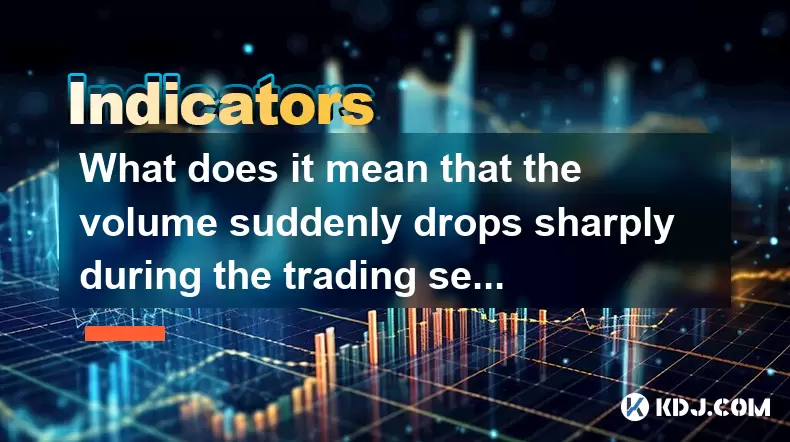
Understanding Volume in Cryptocurrency Trading
In cryptocurrency trading, volume refers to the total amount of a particular asset traded within a specified time frame. It serves as a key indicator for market participants, reflecting interest and liquidity. When traders observe that volume suddenly drops sharply during the trading session but recovers at the end, it signals unusual market behavior that can have multiple underlying causes.
Market Manipulation and Wash Trading
One possible explanation for a sharp drop followed by a recovery in volume is market manipulation or wash trading. Some entities may engage in artificial trading activity to mislead other traders. During such events:
- Large orders are canceled mid-session, leading to a sudden volume drop.
- Toward the close of the session, manipulators resume trading to create the illusion of renewed interest.
- This tactic aims to influence sentiment and trigger reactions from less-informed traders.
This phenomenon is more common on exchanges with low transparency or poor regulatory oversight, where spoofing and wash trading can occur without immediate detection.
Exchange-Specific Technical Issues
Another plausible cause is technical issues on the exchange platform. These could include:
- Temporary server outages affecting order book updates.
- Delays in data synchronization between nodes or APIs.
- Maintenance activities carried out during active trading hours.
When these disruptions occur, traders might be unable to place or cancel orders normally, resulting in an apparent volume collapse. Once the issue is resolved, normal trading resumes, often with increased activity that restores the volume levels before the disruption.
Algorithmic Trading and High-Frequency Trading (HFT)
The involvement of algorithmic trading systems or high-frequency trading (HFT) strategies can also lead to sudden volume fluctuations. These systems operate based on predefined conditions and may react en masse to specific market triggers:
- Algorithms detecting unfavorable market conditions may pause trading temporarily.
- Upon receiving updated signals or after recalibrating risk parameters, they re-enter the market aggressively.
- The result is a noticeable dip followed by a spike in trading volume.
Such behavior is especially visible in highly liquid cryptocurrencies like Bitcoin or Ethereum, where algorithm-driven trades dominate the order flow.
News Events and Sentiment Shifts
A sudden drop in volume can also be attributed to breaking news or unexpected developments in the crypto space. For instance:
- A major regulatory announcement may cause uncertainty, prompting traders to step back.
- Negative media coverage about a prominent project can lead to hesitation in placing new trades.
- Once the initial shock passes, traders reassess the situation and return to the market, restoring volume.
These types of events are typically short-lived but can significantly impact intraday volume patterns.
Time Zone-Based Trading Activity
Cryptocurrency markets operate 24/7, but trading volume varies across different global time zones. If a significant portion of the market is concentrated in one region—such as Asia or Europe—a drop in volume may simply reflect lower participation during off-peak hours. As traders from another region begin their day, volume rebounds accordingly.
For example:
- A sharp decline in volume during U.S. daytime hours may indicate reduced Asian and European participation.
- As the session progresses into the evening in the U.S., traders from other regions become active again, pushing volume upward.
This pattern is particularly evident for altcoins with regional investor bases or limited global adoption.
Frequently Asked Questions
Q: How can I verify whether the volume drop was due to technical issues?
A: You can cross-check the volume data with multiple independent platforms or exchanges. Additionally, monitoring the exchange's official communication channels for maintenance alerts or service disruptions can provide clarity.
Q: Does a sudden volume drop always indicate negative news or manipulation?
A: No. While it can signal manipulation or bad news, it may also result from technical errors, algorithmic adjustments, or natural shifts in trading session dynamics.
Q: Should I make trading decisions based solely on volume changes?
A: It is not advisable to rely solely on volume for trading decisions. Combine volume analysis with price action, order book depth, and fundamental or sentiment indicators to form a comprehensive view.
Q: Are certain cryptocurrencies more prone to volume anomalies than others?
A: Yes. Lower-cap altcoins and tokens with thin order books are more susceptible to volume distortions. Major cryptocurrencies like Bitcoin and Ethereum tend to have more stable and representative volume metrics due to higher liquidity and broader participation.
Disclaimer:info@kdj.com
The information provided is not trading advice. kdj.com does not assume any responsibility for any investments made based on the information provided in this article. Cryptocurrencies are highly volatile and it is highly recommended that you invest with caution after thorough research!
If you believe that the content used on this website infringes your copyright, please contact us immediately (info@kdj.com) and we will delete it promptly.
- 2025-W Uncirculated American Gold Eagle and Dr. Vera Rubin Quarter Mark New Products
- 2025-06-13 06:25:13
- Ruvi AI (RVU) Leverages Blockchain and Artificial Intelligence to Disrupt Marketing, Entertainment, and Finance
- 2025-06-13 07:05:12
- H100 Group AB Raises 101 Million SEK (Approximately $10.6 Million) to Bolster Bitcoin Reserves
- 2025-06-13 06:25:13
- Galaxy Digital CEO Mike Novogratz Says Bitcoin Will Replace Gold and Go to $1,000,000
- 2025-06-13 06:45:13
- Trust Wallet Token (TWT) Price Drops 5.7% as RWA Integration Plans Ignite Excitement
- 2025-06-13 06:45:13
- Ethereum (ETH) Is in the Second Phase of a Three-Stage Market Cycle
- 2025-06-13 07:25:13
Related knowledge
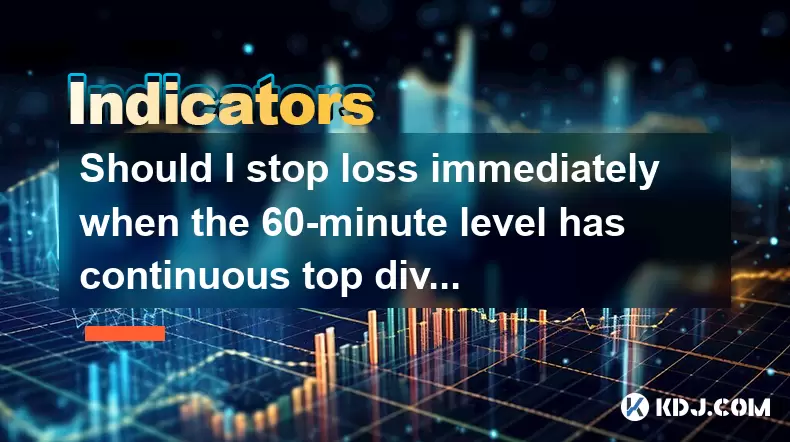
Should I stop loss immediately when the 60-minute level has continuous top divergence?
Jun 17,2025 at 05:28pm
Understanding Top Divergence in the 60-Minute ChartIn cryptocurrency trading, top divergence refers to a technical signal where the price of an asset makes higher highs while the indicator (often RSI or MACD) makes lower lows. This is commonly interpreted as a sign of weakening momentum and potential reversal. When this occurs on the 60-minute chart, it...
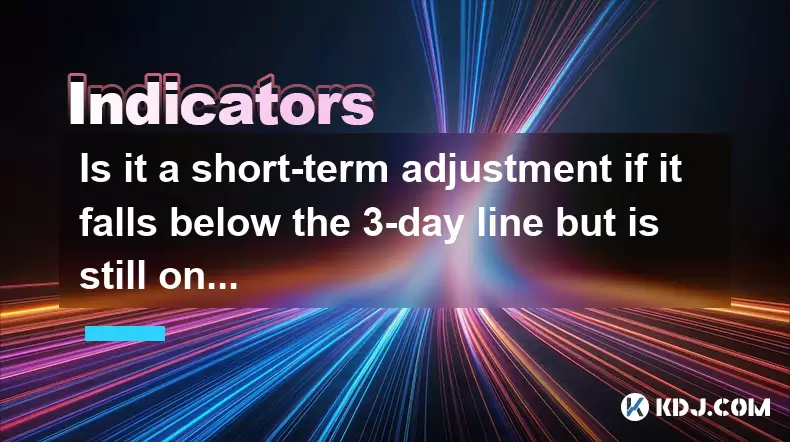
Is it a short-term adjustment if it falls below the 3-day line but is still on the 10-day line?
Jun 17,2025 at 04:07pm
Understanding the 3-Day and 10-Day Moving AveragesIn cryptocurrency trading, moving averages are essential tools for gauging trend strength and potential reversals. The 3-day moving average is a short-term indicator that reflects recent price action with minimal lag, making it highly sensitive to sudden market shifts. In contrast, the 10-day moving aver...
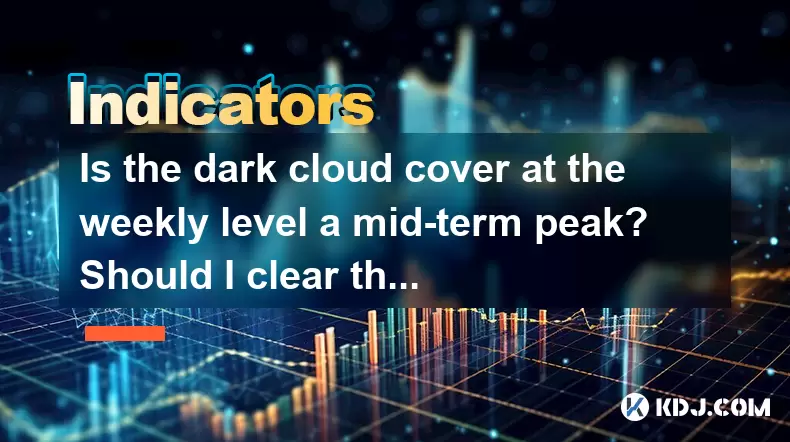
Is the dark cloud cover at the weekly level a mid-term peak? Should I clear the position?
Jun 17,2025 at 02:21pm
Understanding the Dark Cloud Cover PatternThe Dark Cloud Cover is a well-known candlestick pattern used by technical analysts to identify potential trend reversals from bullish to bearish. It typically forms at the end of an uptrend and consists of two candles: the first is a strong bullish (green) candle, followed by a bearish (red) candle that opens h...
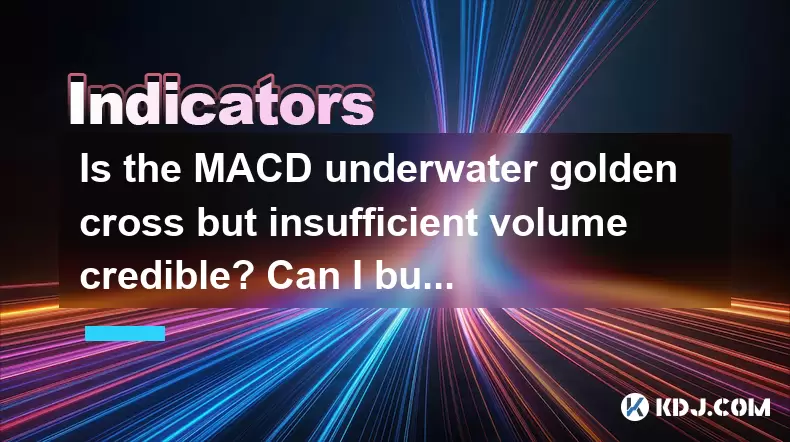
Is the MACD underwater golden cross but insufficient volume credible? Can I buy at the bottom?
Jun 17,2025 at 03:08pm
Understanding the MACD Underwater Golden CrossThe MACD underwater golden cross occurs when the MACD line crosses above the signal line below the zero line, signaling a potential reversal from a downtrend to an uptrend. This phenomenon is often interpreted by traders as a bullish signal, especially in cryptocurrency markets where momentum plays a signifi...
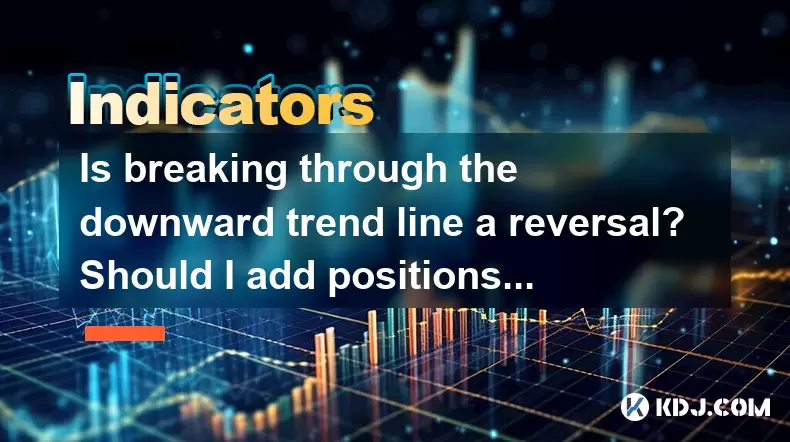
Is breaking through the downward trend line a reversal? Should I add positions?
Jun 17,2025 at 05:22pm
Understanding the Downward Trend Line in Cryptocurrency TradingIn cryptocurrency trading, a downward trend line is drawn by connecting two or more high points on a price chart, indicating a consistent decline in asset value. This line serves as a resistance level, showing that sellers are dominating the market. When the price breaks above this line, it ...
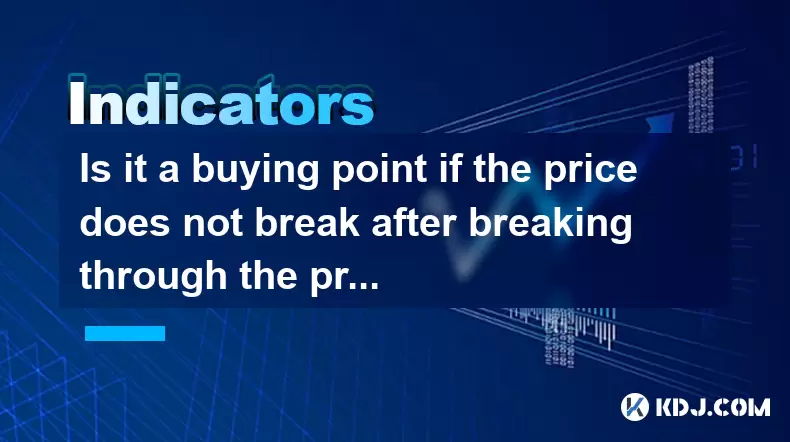
Is it a buying point if the price does not break after breaking through the previous high? How to confirm?
Jun 17,2025 at 01:22pm
Understanding Price Behavior After Breaking Previous HighsWhen analyzing cryptocurrency price charts, traders often look for breakouts as potential signals for new trends. A common question among traders is whether a non-breakdown after breaking through a previous high indicates a buying opportunity. To answer this, it's essential to understand the psyc...

Should I stop loss immediately when the 60-minute level has continuous top divergence?
Jun 17,2025 at 05:28pm
Understanding Top Divergence in the 60-Minute ChartIn cryptocurrency trading, top divergence refers to a technical signal where the price of an asset makes higher highs while the indicator (often RSI or MACD) makes lower lows. This is commonly interpreted as a sign of weakening momentum and potential reversal. When this occurs on the 60-minute chart, it...

Is it a short-term adjustment if it falls below the 3-day line but is still on the 10-day line?
Jun 17,2025 at 04:07pm
Understanding the 3-Day and 10-Day Moving AveragesIn cryptocurrency trading, moving averages are essential tools for gauging trend strength and potential reversals. The 3-day moving average is a short-term indicator that reflects recent price action with minimal lag, making it highly sensitive to sudden market shifts. In contrast, the 10-day moving aver...

Is the dark cloud cover at the weekly level a mid-term peak? Should I clear the position?
Jun 17,2025 at 02:21pm
Understanding the Dark Cloud Cover PatternThe Dark Cloud Cover is a well-known candlestick pattern used by technical analysts to identify potential trend reversals from bullish to bearish. It typically forms at the end of an uptrend and consists of two candles: the first is a strong bullish (green) candle, followed by a bearish (red) candle that opens h...

Is the MACD underwater golden cross but insufficient volume credible? Can I buy at the bottom?
Jun 17,2025 at 03:08pm
Understanding the MACD Underwater Golden CrossThe MACD underwater golden cross occurs when the MACD line crosses above the signal line below the zero line, signaling a potential reversal from a downtrend to an uptrend. This phenomenon is often interpreted by traders as a bullish signal, especially in cryptocurrency markets where momentum plays a signifi...

Is breaking through the downward trend line a reversal? Should I add positions?
Jun 17,2025 at 05:22pm
Understanding the Downward Trend Line in Cryptocurrency TradingIn cryptocurrency trading, a downward trend line is drawn by connecting two or more high points on a price chart, indicating a consistent decline in asset value. This line serves as a resistance level, showing that sellers are dominating the market. When the price breaks above this line, it ...

Is it a buying point if the price does not break after breaking through the previous high? How to confirm?
Jun 17,2025 at 01:22pm
Understanding Price Behavior After Breaking Previous HighsWhen analyzing cryptocurrency price charts, traders often look for breakouts as potential signals for new trends. A common question among traders is whether a non-breakdown after breaking through a previous high indicates a buying opportunity. To answer this, it's essential to understand the psyc...
See all articles

























































































